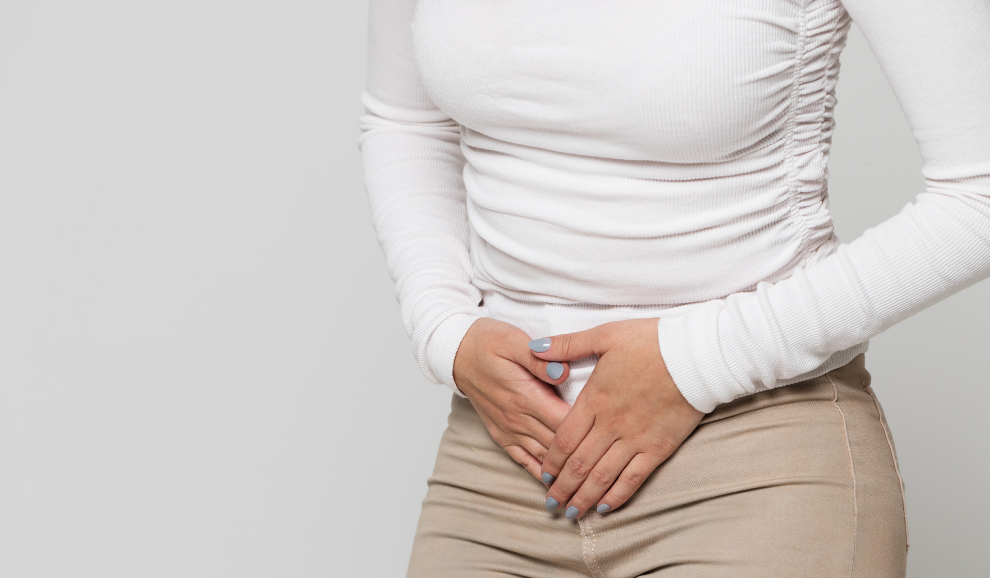Inflammatory Bowel Disease (IBD)
Move Better. Live Fuller. Your Wellness Journey Starts Here.
Schedule a FREE Discovery Call!
What Is Inflammatory Bowel Disease (IBD)?
Not to be confused with IBS, inflammatory bowel disease refers to two conditions that involve inflammation of the gastrointestinal tract: Crohn’s disease and ulcerative colitis.
These inflammatory bowel diseases are chronic, lifelong conditions that cause symptoms of abdominal pain, diarrhea, weight loss, fatigue, anemia, malnutrition, and bloody stool. Additionally, these conditions may affect other parts of the body, causing inflammation in the eyes, skin, liver, or joints. Inflammatory bowel diseases can also lead to other complications or conditions, some of which may be life-threatening.

Although they may sound very similar, each condition has slightly varying symptoms and characteristics, which will be explored more below.
Crohn’s Disease
Crohn’s disease is characterized by patchy inflammation that can spread through multiple layers of the intestinal tract. This condition can have a range of symptoms and can vary in severity. It may be mild, but in other cases it can be very painful and severely affect the quality of a person’s life. Crohn’s can also have periods of remission—where no symptoms are present—and then reappear suddenly. Symptoms of Crohn’s disease may include:
- Abdominal pain
- Diarrhea
- Weight loss
- Fatigue
- Bloody stool
- Reduced appetite
- Bowel leakage
- Pain near the anus
- Kidney stones
- Anemia
Crohn’s disease can lead to other complications such as fistulas, abscesses, or bowel obstructions, which may prompt additional treatments.
This condition can affect any part of the gastrointestinal tract (your mouth, your intestines, your anus, etc). Because of this, there are multiple types of Crohn’s disease that are named depending on the area of the digestive tract they affect. The most common type is Ileocolitis, found in the end of the small intestine (the area right before the large intestine) as well as the part of the large intestine.
Ulcerative Colitis
Ulcerative colitis may cause both inflammation and sores (ulcers) in the colon, and can vary in intensity—ranging from mild symptoms to much more severe symptoms. Unlike with Crohn’s, the inflammation experienced with ulcerative colitis is less patchy and more continuous. Symptoms of ulcerative colitis often develop over time, rather than appearing suddenly. Possible symptoms include:
- Diarrhea
- Bloody stool
- Abdominal pain
- Fatigue
- Weight loss
- Nausea
- Fever
- Anemia
- Rectal pain
- Urgent bowel movements
- More frequent bowel movements
- Feeling the need to have a bowel movement, but being unable to
Ulcerative colitis is found in the rectum and throughout the large intestine. Typically, this condition primarily affects one layer of the large intestine, unlike Crohn’s, which can spread to deeper layers in any portion of the digestive tract. This condition may be referred to by type, depending on which portion of the large intestine it affects. Type of ulcerative colitis include the following:
- Ulcerative proctitis: Inflammation affecting the rectum
- Left-sided colitis: Inflammation of the left-side of the large intestines.
- Pancolitis: Inflammation affecting the entire colon.
What Causes IBD?
In either case, the exact cause of inflammatory bowel disease is still unknown—most agree it is an immune disorder. This suggests that the body is creating an inaccurate immune response that results in inflammation of the gastrointestinal tract. IBD is also thought to be hereditary, and is more likely to be found among those who have the conditions running in their family.
There is no cure for either type of IBD, and so those who are affected by these conditions must develop methods to manage their symptoms alongside regular testing and check-ups. In the next section, we’ll discuss ways that physical therapy can help patients manage their symptoms of IBD.
Physical Therapy for Inflammatory Bowel Disease
If you are diagnosed with a form of IBD, it can be beneficial to utilize pelvic floor physical therapy to help manage your symptoms. Physical therapy is not a form of treatment to cure IBD, but it helps improve the quality of life for those who must live with the condition long-term. Physical therapy can not only help you stay in good health physically, but can also help you manage symptoms of pain from IBD. Additionally, pelvic floor therapy can help you better coordinate your pelvic floor muscles to create healthier bathroom habits.
As mentioned earlier, those with IBD may experience fatigue, abdominal pain, discomfort, and joint pain. Physical therapy can lessen your symptoms by helping improve your overall strength, posture, flexibility, and mobility. This can be achieved through personalized exercises and activities, manual therapy, and many other treatment options. These treatment options can even help improve energy levels, reduce fatigue, and improve your body’s overall health.
Another important reason to consider pelvic floor physical therapy is that pelvic floor dysfunction is common in those with IBD. Addressing pelvic floor dysfunction can help address irregular or difficult bowel movements, constipation, or incontinence.
Symptoms of IBD can range from person to person, but physical therapy is a great way to manage symptoms better and support a healthy lifestyle. Some treatments we utilize at Hive Therapy and Wellness to support patients with IBD include:
- Neuromuscular re-education
- Manual therapy
- Exercise prescription
- Cupping
- Behavioral modification
- Therapeutic activity
- Therapeutic modalities
- Biofeedback
Not to be confused with IBS, inflammatory bowel disease refers to two conditions that involve inflammation of the gastrointestinal tract: Crohn’s disease and ulcerative colitis.
These inflammatory bowel diseases are chronic, lifelong conditions that cause symptoms of abdominal pain, diarrhea, weight loss, fatigue, anemia, malnutrition, and bloody stool.
Additionally, these conditions may affect other parts of the body, causing inflammation in the eyes, skin, liver, or joints. Inflammatory bowel diseases can also lead to other complications or conditions, some of which may be life-threatening.
Although they may sound very similar, each condition has slightly varying symptoms and characteristics, which will be explored more below.
Crohn’s Disease
Crohn’s disease is characterized by patchy inflammation that can spread through multiple layers of the intestinal tract.
This condition can have a range of symptoms and can vary in severity. It may be mild, but in other cases it can be very painful and severely affect the quality of a person’s life.
Crohn’s can also have periods of remission—where no symptoms are present—and then reappear suddenly. Symptoms of Crohn’s disease may include:
- Abdominal pain
- Diarrhea
- Weight loss
- Fatigue
- Bloody stool
- Reduced appetite
- Bowel leakage
- Pain near the anus
- Kidney stones
- Anemia
Crohn’s disease can lead to other complications such as fistulas, abscesses, or bowel obstructions, which may prompt additional treatments.
This condition can affect any part of the gastrointestinal tract (your mouth, your intestines, your anus, etc). Because of this, there are multiple types of Crohn’s disease that are named depending on the area of the digestive tract they affect.
The most common type is Ileocolitis, found in the end of the small intestine (the area right before the large intestine) as well as the part of the large intestine.
Ulcerative Colitis
Ulcerative colitis may cause both inflammation and sores (ulcers) in the colon, and can vary in intensity—ranging from mild symptoms to much more severe symptoms.
Unlike with Crohn’s, the inflammation experienced with ulcerative colitis is less patchy and more continuous. Symptoms of ulcerative colitis often develop over time, rather than appearing suddenly. Possible symptoms include:
- Diarrhea
- Bloody stool
- Abdominal pain
- Fatigue
- Weight loss
- Nausea
- Fever
- Anemia
- Rectal pain
- Urgent bowel movements
- More frequent bowel movements
- Feeling the need to have a bowel movement, but being unable to
Ulcerative colitis is found in the rectum and throughout the large intestine. Typically, this condition primarily affects one layer of the large intestine, unlike Crohn’s, which can spread to deeper layers in any portion of the digestive tract.
This condition may be referred to by type, depending on which portion of the large intestine it affects. Type of ulcerative colitis include the following:
- Ulcerative proctitis: Inflammation affecting the rectum
- Left-sided colitis: Inflammation of the left-side of the large intestines.
- Pancolitis: Inflammation affecting the entire colon.
In either case, the exact cause of inflammatory bowel disease is still unknown—most agree it is an immune disorder. This suggests that the body is creating an inaccurate immune response that results in inflammation of the gastrointestinal tract.
IBD is also thought to be hereditary, and is more likely to be found among those who have the conditions running in their family.
There is no cure for either type of IBD, and so those who are affected by these conditions must develop methods to manage their symptoms alongside regular testing and check-ups.
In the next section, we’ll discuss ways that physical therapy can help patients manage their symptoms of IBD.
If you are diagnosed with a form of IBD, it can be beneficial to utilize pelvic floor physical therapy to help manage your symptoms. Physical therapy is not a form of treatment to cure IBD, but it helps improve the quality of life for those who must live with the condition long-term.
Physical therapy can not only help you stay in good health physically, but can also help you manage symptoms of pain from IBD. Additionally, pelvic floor therapy can help you better coordinate your pelvic floor muscles to create healthier bathroom habits.
As mentioned earlier, those with IBD may experience fatigue, abdominal pain, discomfort, and joint pain. Physical therapy can lessen your symptoms by helping improve your overall strength, posture, flexibility, and mobility.
This can be achieved through personalized exercises and activities, manual therapy, and many other treatment options. These treatment options can even help improve energy levels, reduce fatigue, and improve your body’s overall health.
Another important reason to consider pelvic floor physical therapy is that pelvic floor dysfunction is common in those with IBD. Addressing pelvic floor dysfunction can help address irregular or difficult bowel movements, constipation, or incontinence.
Symptoms of IBD can range from person to person, but physical therapy is a great way to manage symptoms better and support a healthy lifestyle. Some treatments we utilize at Hive Therapy and Wellness to support patients with IBD include:
- Neuromuscular re-education
- Manual therapy
- Exercise prescription
- Cupping
- Behavioral modification
- Therapeutic activity
- Therapeutic modalities
- Biofeedback
You can learn more about these treatments on our Treatments Page.





